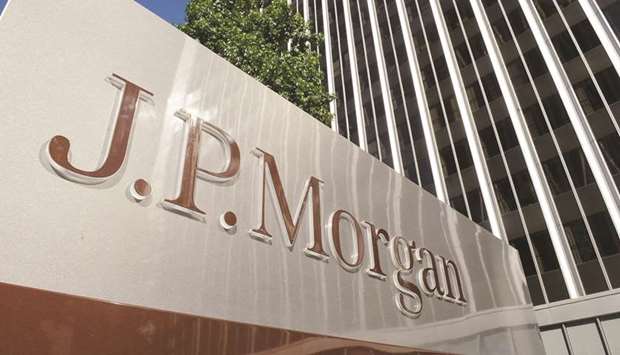A US interest-rate cut may be on the horizon, but a JPMorgan Asset Management fund is shying away from emerging-market assets.
The money manager’s Global Income Fund halved its holdings of developing-nation fixed income and equities to 3% each in the past year, opting instead to buy European corporate junk bonds and Treasuries, according to its co-manager Eric Bernbaum.
The $50bn strategy is sceptical about emerging Asia’s prospects due to the region’s exposure to the US-China trade war.
“The area that we’ve seen the most deterioration in – and the most weakness – is in the emerging-markets complex, particularly ex-China,” New York-based Bernbaum said by phone. “We’re thinking of areas like Korea, Taiwan, Singapore – those regions and countries that are very exposed to global trade uncertainty, disruption of supply chains and waning demand.”
Bernbaum’s call serves as a warning as traders celebrate the coming US interest-rate cut by piling into risk assets. Even if the Fed eases, Asia’s export-reliant economies must still contend with the damage wrought by the trade war, with no sign that the dispute will be resolved anytime soon.
While Washington has restarted high-level talks with Beijing, the truce is far from a game-changer, according to Bernbaum. Thorny issues such as intellectual property rights and cyber security still persist.
US President Donald Trump has complained that China didn’t boost purchases of American farm products as promised by his Chinese counterpart Xi Jinping last month.
“I would say there would be no huge, ground-breaking resolution on the longer-term structural issues,” Bernbaum said. “There’s still going to be ongoing uncertainty.” If recent data are any guide, more weakness may be in store for emerging Asia’s economies.
Shipments from South Korea fell 2.6% in the first 10 days of July, with sales of semiconductors down by a quarter from a year earlier, while Singapore’s economy unexpectedly contracted in the second quarter, a report showed on Friday.
China trade figures, also released on Friday, showed exports fell 1.3% in June from a year ago and imports shrank more than economists expected. The strategy, among JPMorgan Asset’s biggest mutual funds, sold five-year Treasury futures about a month ago and has been buying 10-year futures where it sees more value, Bernbaum said before Fed Chairman Jerome Powell’s testimony to Congress on Wednesday.
Ten-year Treasury yields have declined 55 basis points in 2019 to 2.14%, and more than a percentage point from the seven-year high of 3.26% set in October.
“If investors globally are looking for safe duration with some yield, the US 10-year, the belly of the US curve, is actually not a bad place to be,” he said.
JPMorgan expects the Fed to cut rates by a quarter of a percentage point in July, and potentially once more by year-end.
Fed chair Powell indicated on Wednesday that policy makers are preparing to lower interest rates due to a cooling global economy and no sign of overheating in the jobs market at home.
He affirmed his view on Thursday, by telling the Senate Banking Committee there’s room to ease as the tie between the inflation and jobless rates has broken down. Here are some of Bernbaum’s other views:
Slowing growth: “In the US, while economic growth is slowing, it’s only just slightly below trend – and we’re expecting it to stabilise around that between now and the rest of the year”.
While America will be impacted by the trade war, it’s “less exposed than other areas of the world – be it emerging markets, Europe or Japan” Treasuries at 2%.
“The low end of our range for 10-year Treasuries is about where we are today, which is 2%. Two to 2.75% is fair value. We absolutely think there could be slight downside risk to that”.
“We held our allocations in the shorter-end of the curve, we’ve now switched that to be more in the belly of the curve which we think is less richly priced”.
“We think the front end is very aggressively and in our opinion, too aggressively pricing in the extent of cuts by the central bank, but at the belly of the curve we find a bit more attractive because it’s less tied to the immediate reaction to the Fed cuts”.
European high-yield corporate bonds make up about 10% of our portfolio today, and we continue to like them “Stabilising growth with very accommodative monetary policy and lower interest rates will continue to be a supportive environment for carry”.

A JPMorgan sign is seen outside the office tower housing the financial services firm’s Los Angeles, California offices.
